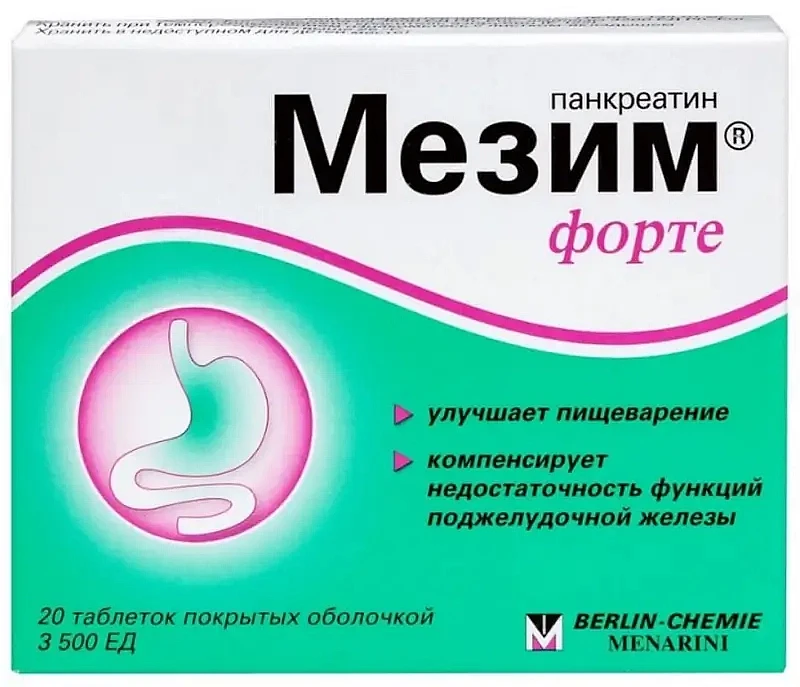Nutrition after gallbladder removal
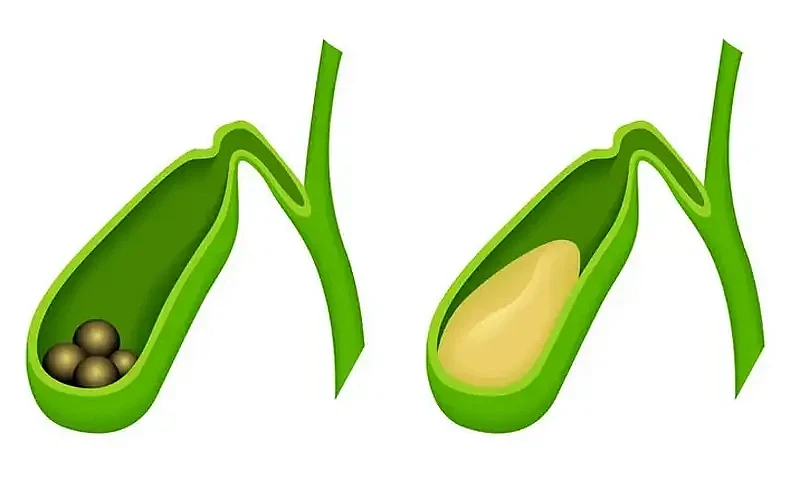
The gallbladder is a small, pear-shaped organ located under the liver that stores the bile that the liver produces. When food enters the small intestine, the gallbladder contracts and throws 40 to 60 mL of bile, which is necessary for the digestion and assimilation of fatty foods, through the bile ducts.
Gallbladder
But sometimes the substances that make up bile (cholesterol, bile salts, bilirubin) can accumulate and harden, forming stones in the gallbladder. It is the most common cause of cholecystectomy.
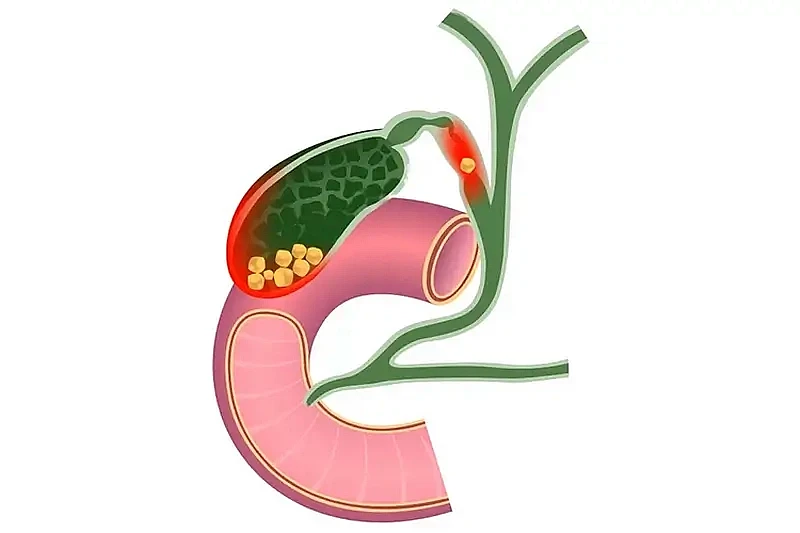
Indications for the operation:
Acute cholecystitis: May cause severe complications such as peritonitis, abscesses, and sepsis.
Cholesterosis (cholesterol deposition in the bladder wall): Cholecystectomy is done if gallbladder function is impaired.
Gallbladder calcification (deposition of calcium salts): The risk of cancer (about 25%) is high.
Symptomatic cholelithiasis (GSD): The presence of hepatic colic is an absolute indication for surgery. It is also recommended to remove the gallbladder if there is pain in the right upper rib and a bitter mouth.
Asymptomatic GI: Calculi 2.5 to 3 cm and if patients are expected to be 20 years or older require surgery.
Gallbladder polyps: Cholecystectomy is indicated if the polyp is larger than 1 cm or has a vascular pedicle.
Choledocholithiasis (stones in the bile ducts): The ducts may become blocked, and mechanical jaundice may develop, as may pancreatitis and cholangitis. In this case, not only is the gallbladder removed, but the bile ducts are also sanitized.
How Gallbladder Removal Affects Digestion
In principle, the gallbladder is an organ, without which you can do and even fully live. Bile will leak from the liver and flow directly into the intestine through the bile ducts. Thus, most people have no particular problem with ingesting or digesting food after a cholecystectomy. But some people may have digestive problems or other complications.
Complications may begin immediately after surgery or may occur years later.
They typically manifest as nausea, abdominal pain after eating, and diarrhea and are called postcholecystectomy syndrome.
Digestive system complications:
Difficulty digesting fatty foods. It is often more difficult to digest fatty foods during the first month after surgery. A low-fat diet and ingestion of digestive enzymes can help.
Temporary diarrhea. Because the gallbladder no longer controls the flow of bile, bile enters the small intestine continuously but in smaller amounts. As a result, the increased amount of bile can lead to watery, more frequent stools. This side effect is often temporary and does not require any treatment. But if diarrhea lasts more than three days, people should see a doctor.
Chronic diarrhea. Some people who previously had one bowel movement a day find that bowel movements become more frequent after the gallbladder is removed. Chronic diarrhea may occur for months or years after surgery. A low-fat diet will improve the gastrointestinal tract, and taking drugs that bind excess bile acids (which are the cause of the unpleasant symptom) will help eliminate the problem.
Temporary constipation. Constipation sometimes results from pain relievers given after surgery. Eating foods rich in fiber - bran, whole grains, fruits, and vegetables - can help prevent or relieve constipation. Doctors may also give a softener to soften the stool.
A stone stuck in the bile duct. Sometimes a gallstone remains in the common bile duct after a cholecystectomy. It can block the flow of bile into the small intestine and cause pain, fever, nausea, vomiting, abdominal distention, and jaundice.
Oddi's sphincter dysfunction
If you have persistent pain in the upper abdomen after the gallbladder is removed, it is possible that this is a manifestation of sphincter of Oddi dysfunction (SJD).
The sphincter of Oddi is a valve located in the small intestine that regulates the flow of bile and pancreas juices. Very few people have sphincter of Oddi dysfunction. Dysfunction occurs when the sphincter does not relax properly, preventing bile and pancreatic juices from entering the small intestine. The dysfunction is characterized by pain in the central and upper right abdomen that lasts at least 30 minutes and is felt in the back or shoulder. The pain usually occurs shortly after eating. Some people report nausea and vomiting. Pain symptoms are thought to result from excessive accumulation of juices in the ducts.
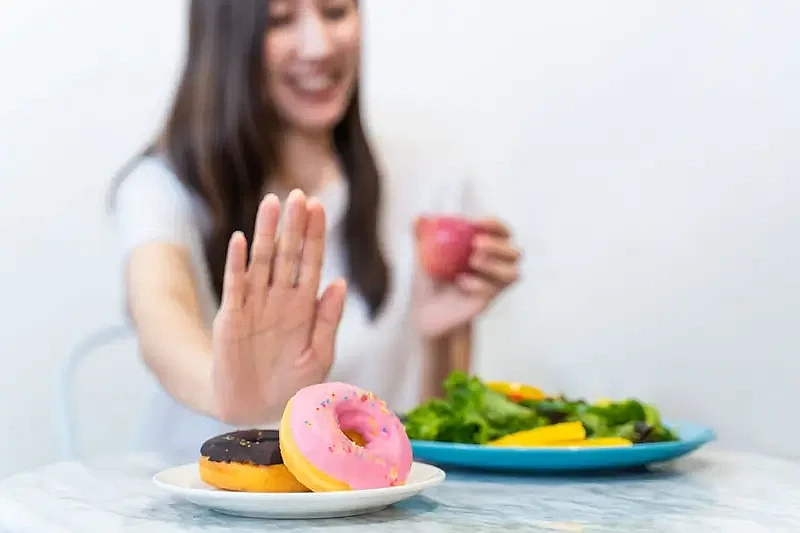
Nutritional Considerations After Cholecystectomy
- When the gallbladder is removed, a special diet is important. In the first days, the diet should be as sparing as possible, and then you should follow the diet prescribed by the gastroenterologist, most often it is the treatment table No. 5.
- The main nutritional recommendations that should be followed for life:
- Heat treatment of food: Food should be steamed or cooked. Fried, smoked and pickled dishes are forbidden.
- Frequent meals: It is recommended to eat 5-6 times a day in small portions. This will help maintain physiologic bile flow.
- /Food temperature: Dishes should be warm, too hot or cold food can adversely affect digestion.
- Last meal: Dinner should be at least 2 hours before bedtime.
- hewing thoroughly: Food should be chewed thoroughly, avoiding overeating.
- ydration: It is important to drink enough water - 1.5-2 liters per day.
- Probiotics: The diet should include fermented milk products rich in probiotics. At night, drinking yogurt or yogurt is recommended.
Calorie distribution: Dietary calories should be distributed equally:
- 1st breakfast - 20%;
- lunch - 30-35%;
- glacier - 15%;
- dinner - 15-20%;
- morning and evening intake of sour milk product - 10% each.
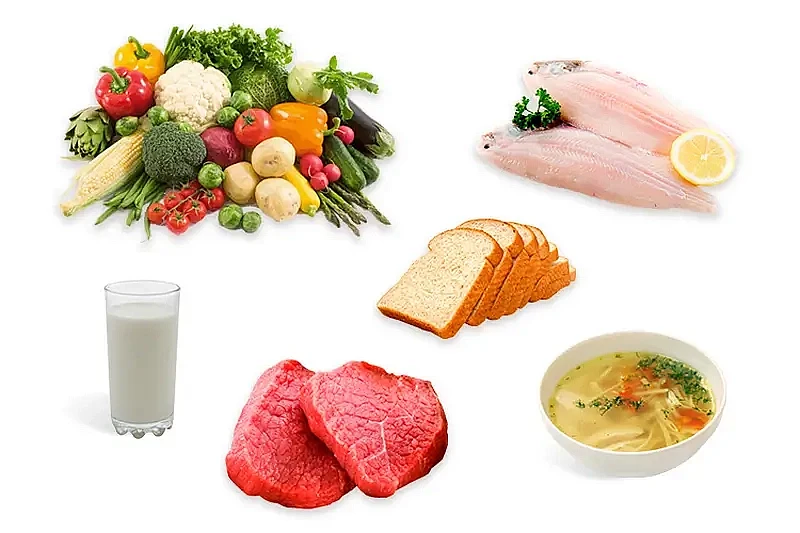
Diet and nutrition after gallbladder removal
During the first 3-4 months after surgery, it is important to strictly follow a diet. In consultation with a gastroenterologist, new products can be introduced gradually, guided by well-being. The basic diet (table 5) is recommended for 1-1.5 years after removal of the gallbladder (cholecystectomy).
Soups:
Non-accidental vegetable soups;
Meat soups on the second broth;
Fish soups;
Cereal soups on vegetable broth;
Dairy soups with pasta;
Vegetarian borscht and beet.
It is important to remember that vegetables for refueling should not be fried.
Bread:
Wheat bread from flour of the 1st and 2nd grades;
Rye bread made from sown and scavenging flour (yesterday's pastries).
Meat and poultry:
Non-fat varieties of meat without fascias and tendons;
Skinless bird (turkey, chicken, rabbit, lamb, beef).
Fish:
Low-fat fish, steamed, baked or in the form of meatballs and soufflé.
Dairy products:
Low-fat milk (in the composition of various dishes);
Kefir, curdled milk, acidophilin;
Low fat cottage cheese or cottage cheese;
Low-fat cheese.
Eggs:
Baked protein omelet.
Cereals: you can vary, especially useful buckwheat and oatmeal.
Vegetables: different raw, boiled, stewed. Also allowed non-acidic sauerkraut, onion after boiling, mashed green peas.
Various fruits and berries (except acidic), as well as dried fruits.
Allowed sweets: meringue, marmalade, pastille, jelly, mousse, honey, jam, dry sponge cake, lingering cookies. Sugar should be partially replaced with xylitol (sorbitol).
Beverages: compotes and honey.

What can not eat after removing the gallbladder
After the gallbladder is removed, eating habits need to be adjusted so that digestion remains effective.
Foods to eliminate from the diet after cholecystectomy
Oily and fried food: fries, chips, onion rings, fried cakes, smoked meat, sausages, canned food.
Fat products: lard, fat meat (pork, duck, goose), boiled broths, caviar, cheese, butter.
Foods that cause bloating: pulses, broccoli, milk.
Fresh bread and pastries: puff pastry and dough.
Eggs: hard-boiled, soft-boiled and fried.
Vegetables with high acid content: spinach, sorrel, radish, radish, green onion, garlic, mushrooms, pickled vegetables.
Spicy spices and seasonings: mustard, hot pepper, horseradish.
Sweets and desserts: chocolate, cream products, ice cream.
Drinks: strong coffee and tea, cold and carbonated drinks.
Alcohol is strongly contraindicated.
Over time, the body adapts to new conditions, and the diet can be gradually expanded. Usually during recovery, people get used to a healthier lifestyle and proper nutrition, which positively affects their well-being.
